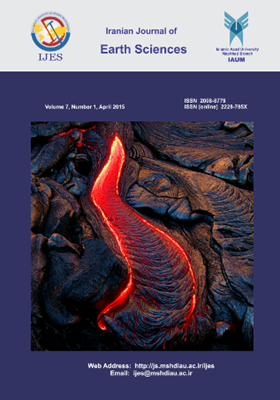Assessment of Anthropogenic Activities on the Water Quality of Froumad Plain Based on Qualitative Indicators
Subject Areas : MineralogyMajid Otari 1 , Rahim Dabiri 2
1 - Department of Geology, Mashhad Branch, Islamic Azad University, Mashhad, Iran
2 - Department of Geology, Mashhad Branch, Islamic Azad University, Mashhad, Iran
Keywords:
Abstract :
Tested water samples taken from the ophiolite region of Forumad show that most of the concentrations of calcium, magnesium, sodium, sulfate, potassium, bicarbonate, and nitrate elements are in the standard range. Hydrogeochemical studies of the water samples show the existence of magnesium sulfate, chloromagnesium, and chlorosodium. Results of measuring the physical properties of the water shows that the above values were lower than the 1053 standard of Iran and water hardness is higher than the standard in only some cases. Water pH in the studied region is within the alkaline range. Assessing the distribution of heavy metals through statistical methods (Pearson coefficient and cluster graph), two different origins (anthropogenic and lithological origins) have been identified that are responsible for the entry of heavy metals into the water resources of the studied region. The anthropogenic origin of the distribution of heavy metals in the region is due to local mining of the chromite and ophiolitic rocks and the lithological origin is a result of local mining of conglomerate and volcanic rocks. Evaluating the metal index of MI and HPI shows the water contamination by heavy metals. The zoning map shows that the metallic contamination surrounding Forumad village is low and reaches its maximum amount around the chromite Forumad mine. The qualitative index of GQI (non-metallic cations and anions including calcium, sodium, chlorine, magnesium, sulfate, and dissolved solids in water) shows that the water quality is within the acceptable range. Based on the zoning map, the water quality GQI index is higher in the downstream around Forumad village.


